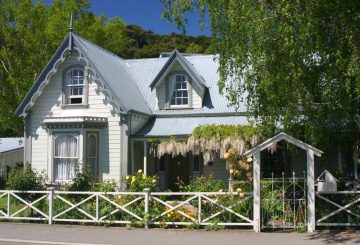Bandara Auckland sedang membangun terminal baru yang akan menggabungkan transfer domestik dan internasional, check-in, dan pengantaran tas di satu lokasi. Namun, konstruksi ini dapat menyebabkan gangguan hingga 20 juta wisatawan per tahun hingga proyek selesai pada tahun 2029. Proyek senilai hampir $4 miliar akan menggantikan terminal domestik lama bandara, yang pertama kali dibuka pada tahun 1966.
Terminal baru tidak akan mewah, tetapi akan fokus pada dasar-dasarnya, menurut Scott Tasker, chief customer officer Bandara Auckland. Bangunan baru akan menghubungkan terminal domestik dan internasional, memungkinkan wisatawan untuk mentransfer antara penerbangan domestik dan internasional tanpa meninggalkan bandara. Baik penumpang internasional maupun domestik akan dapat melakukan check-in di lokasi yang sama dengan kios baru dan pengantaran tas otomatis.
Terminal baru akan memberikan navigasi yang lebih baik bagi wisatawan, lebih banyak area tempat duduk, stasiun pengisian telepon, fasilitas kamar mandi yang ditingkatkan, dan lebih banyak kapasitas bagi maskapai penerbangan untuk menambahkan penerbangan selama waktu sibuk. Namun, Tasker memperingatkan bahwa akan ada gangguan selama lima tahun ke depan saat konstruksi sedang berlangsung. Meskipun demikian, ia meyakinkan bahwa bandara bekerja keras untuk meminimalkan gangguan ini dan meminta kesabaran pelanggan, menjanjikan bahwa hasil akhirnya akan sepadan dengan ditunggu.
Terminal baru, yang diperkirakan akan dibuka pada 2029, diperlukan agar Bandara Auckland memiliki terminal domestik yang efisien. Terminal itu sendiri menelan biaya $2,2 miliar, dengan pekerjaan terkait, termasuk peningkatan lapangan terbang, menelan biaya sekitar $1,7 miliar. Meskipun biayanya tinggi, Tasker mengatakan terminal tersebut sebanding dengan terminal internasional lainnya dengan ukuran yang sama. Dia juga menyebutkan bahwa biaya penerbangan domestik akan meningkat dari $10,25 per penumpang menjadi $15,45 pada tahun 2027, yang mirip dengan biaya di bandara utama Selandia Baru lainnya.
Tahun lalu, terminal domestik bandara rusak parah akibat banjir setinggi lutut selama badai. Sebagai tanggapan, peningkatan air hujan substanSIAL telah dilakukan di utara kantor polisi untuk mencegah kerusakan di masa depan.
Fitur terbaik terminal baru akan disembunyikan dari pandangan, menurut direktur proyek Isaac Taylor. Sistem bagasi baru, misalnya, akan menjadi peningkatan yang signifikan dalam hal efisiensi dengan bagasi penumpang dan pemuatan ke pesawat. Terminal baru akan menggunakan “sistem pembawa individu”, yang lebih cepat dan kurang rentan terhadap kemacetan daripada sabuk konveyor biasa.
Terminal saat ini hanya dapat melayani sekitar 15.000 penumpang setiap hari, tetapi terminal baru akan meningkatkan kapasitas ini menjadi sekitar 20.000 penumpang per hari, meningkat 26%. Pekerjaan konstruksi di terminal baru akan dimulai nanti pada tahun 2024.




























































